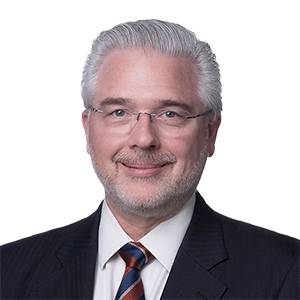In a decision with implications for private securities fraud suits, the US Supreme Court held that an investment banker that copied and pasted misstatements from his boss into emails to prospective investors committed securities fraud, despite not being the actual "maker" of the statement (i.e., the statement was attributed to another person). The Court, in Lorenzo v. Securities and Exchange Commission, No. 17-1077, reasoned that even though the investment banker did not make the misstatements from a securities law perspective, his act of distributing those misstatements while knowing they were false constituted participation in a fraudulent scheme. Finding the investment banker liable as a primary violator for fraudulent scheme liability—as opposed to aiding and abetting a fraudulent misstatement, which would constitute secondary liability that only the SEC can pursue—opens the door for private plaintiffs to utilize fraudulent scheme liability theories in the same manner in future securities fraud suits.
Background
Francis Lorenzo was director of investment banking at a small registered broker-dealer. Although he was told that Waste2Energy Holdings, Inc. (W2E) had publicly disclosed that its intellectual property was worthless and that its total assets amounted to only US$370,552 (previously valued at about US$14 million), he omitted this devaluation when soliciting two potential investors by email to invest in a US$15 million bond issuance. Lorenzo testified that he sent the emails at the direction of his boss, that his boss supplied the content of the emails, and that his boss "approved" the messages.
Fraudulent statements and fraudulent schemes
Section 10(b) of the Securities Exchange Act of 1934 and Rule 10b-5 thereunder and Section 17(a) of the Securities Act of 1933 prohibit fraudulent statements and fraudulent schemes in connection with the offer and sale of securities.
Regarding fraudulent statements, Rule 10b-5(b) prohibits making any "untrue statement of a material fact." The SEC can also use Section 17(a)(2) of the Securities Act of 1933 (Securities Act), which establishes liability for untrue statements or omissions of a material fact.
In Janus Capital Group, Inc. v. First Derivative Traders, 564 U.S. 135 (2011), the Supreme Court held that only the "maker" of a fraudulent statement may be held liable under Rule 10b-5. According to Janus,
[f]or purposes of Rule 10b-5, the maker of a statement is the person or entity with ultimate authority over the statement, including its content and whether and how to communicate it. Without control, a person or entity can merely suggest what to say, not "make" a statement in its own right. One who prepares or publishes a statement on behalf of another is not its maker.
564 U.S. at 142.
Three provisions collectively prohibit engaging in fraudulent schemes: Rule 10b-5(a) prohibits the employment of "any device, scheme, or artifice to defraud," Rule 10b-5(c) prohibits anyone from engaging in "any act, practice, or course of business which operates or would operate as a fraud or deceit upon any person," and Section 17(a)(1) of the Securities Act (which the SEC can utilize) prohibits the employment of any "device, scheme, or artifice to defraud."
The Lorenzo action below
In Lorenzo, the SEC initiated administrative proceedings and upheld an administrative law judge's determination that Lorenzo was liable for making fraudulent statements under Section 10(b) and Rule 10b-5(b), as well as fraudulent scheme liability under Rules 10b-5(a) and (c) and Section 17(a)(1).
Lorenzo appealed the SEC's decision to the DC Circuit. See Lorenzo v. SEC, 872 F.3d 578 (D.C. Cir. 2017). The DC Circuit rejected the SEC's finding of Rule 10b-5(b) liability on grounds that Lorenzo was not the "maker" of the false statements in the emails he sent to the potential investors. However, the DC Circuit upheld the SEC's findings with respect to scheme liability.
The Supreme Court granted certiorari to decide "whether someone who is not a 'maker' of a misstatement under Janus can nevertheless be found to have violated the other subsections of Rule 10b-5 and related provisions of the securities laws, when the only conduct involved concerns a misstatement."
The US Supreme Court's decision
The Supreme Court applied a straightforward statutory analysis to answer in the affirmative:
. . . By sending emails he understood to contain material untruths, Lorenzo "employ[ed]" a "device," "scheme," and "artifice to defraud" within the meaning of subsection (a) of the Rule, §10(b), and §17(a)(1). By the same conduct, he "engage[d] in a[n] act, practice, or course of business" that "operate[d] . . . as a fraud or deceit" under subsection (c) of the Rule. Recall that Lorenzo does not challenge the appeals court's scienter finding, so we take for granted that he sent the emails with "intent to deceive, manipulate, or defraud" the recipients. Under the circumstances, it is difficult to see how his actions could escape the reach of those provisions.
Slip Op. at 6 (citation omitted). The Court acknowledged that there might be "borderline cases" and still other instances where liability would typically be inappropriate for actors tangentially involved in a dissemination (e.g., a mailroom clerk). In this case, however, Lorenzo "sent false statements directly to investors, invited them to follow up with questions, and did so in his capacity as vice president of an investment banking company."
The Court rejected Lorenzo's arguments, which were largely premised on the notion that Section 10b-5(b)—which addresses fraudulent misstatements and omissions specifically—together with Janus exclusively control securities fraud actions premised on misstatements and omissions. To that end, Lorenzo claimed that applying Sections 10b-5(a) and (c)'s broad scheme liability provisions to non-speakers would disregard Janus and Section 10b-5(b).
Writing for the majority, Justice Breyer reasoned that the Court and SEC have recognized overlapping subsections of Rule 10b-5 and the securities laws and that "we can assume that Janus would remain relevant (and preclude liability) where an individual neither makes nor disseminates false information—provided, of course, that the individual is not involved in some other form of fraud." Ultimately, the Court was persuaded by the concern that if it upheld Lorenzo's arguments, "those who disseminate false statements with the intent to cheat investors might escape liability under the Rule altogether." The bottom line for the Court is that "[t]hose who disseminate false statements with intent to defraud are primarily liable under Rules 10b-5(a) and (c), §10(b), and §17(a)(1), even if they are secondarily liable under Rule 10b-5(b)."
In dissent, Justice Thomas pronounced that "the majority's opinion renders Janus a dead letter" because according to the majority, administrative acts in connection with a fraudulent misstatement qualifies as other forms of fraud subject to liability. He also cautioned that the majority blurs the line between primary and secondary liability in fraudulent misstatement cases: "If Lorenzo's conduct here qualifies for primary liability under §10(b) and Rule 10b-5(a) or (c), then virtually any person who assists with the making of a fraudulent misstatement will be primarily liable and thereby subject not only to SEC enforcement, but private lawsuits."
According to Justice Thomas, overall the majority created a rule whereby "a person who has not 'made' a fraudulent misstatement within the meaning of Rule 10b-5(b) nevertheless could be held primarily liable for facilitating that same statement; the SEC or plaintiff need only relabel the person's involvement as an 'act,' 'device,' 'scheme,' or 'artifice' that violates Rule 10b-5(a) or (c)." As a result, "Rule 10b-5(b) and §17(a)(2) are rendered entirely superfluous in fraud cases under the majority's reading."
Implications
Taking advantage of Lorenzo, Plaintiffs will fashion claims to allege scienter and try casting a wider net to pull in parties who might previously have been considered secondary actors. Because Lorenzo did not challenge the finding of scienter on appeal, the Court was faced with strong evidence of a fraud perpetrated by an investment banker who knowingly sent false information to potential investors. How a court ultimately adjudicates a private civil litigation with less clear facts remains to be seen.





